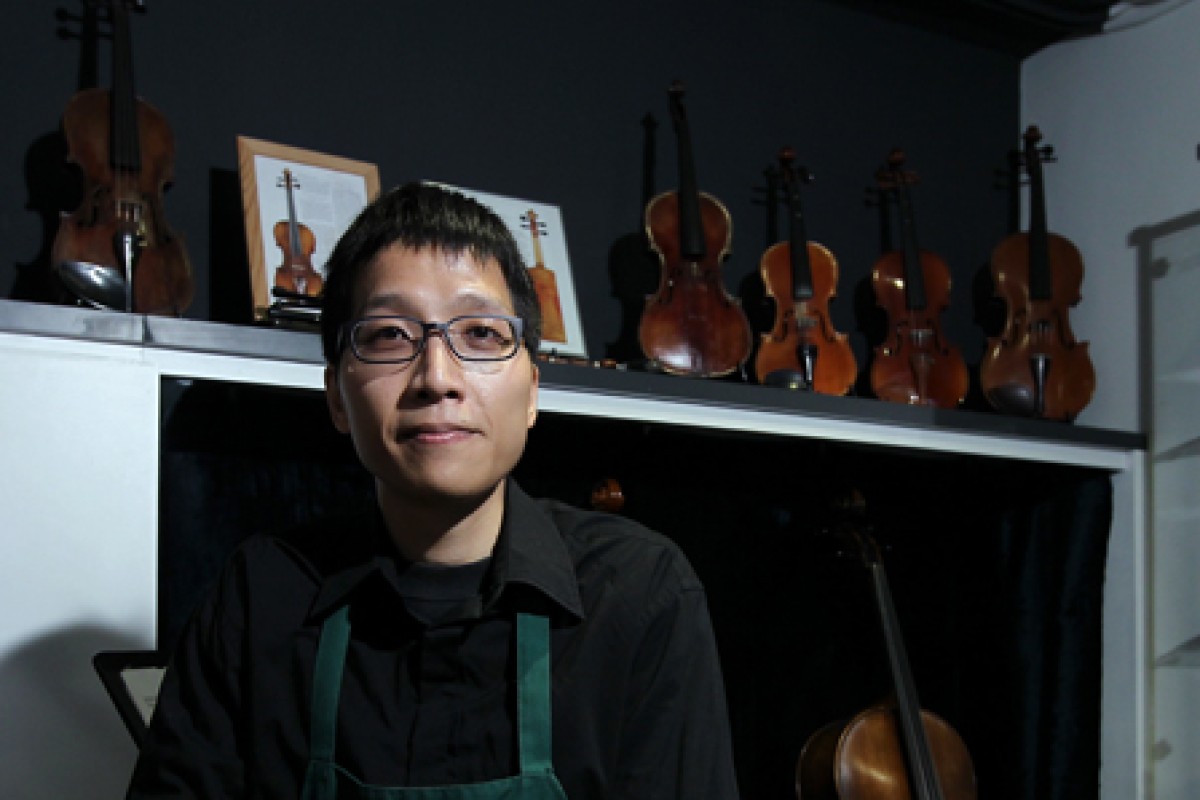 Violin maker Chan Ka-wing crafts a new instrument.
Violin maker Chan Ka-wing crafts a new instrument.Unlike in Italy - known as the cradle of violin makers - one could count the number of Hongkongers in the trade on the fingers of one hand. And Chan is one of the few.
From pop tunes to hymns, the music of the violin always caught his attention first. But having spent much of his childhood living in a makeshift hut, he knows his family could neither afford a good instrument nor employ a music teacher.
It was not until he started working that he took violin lessons. For a year, he woke at 5am every day to practise.
As his skills improved and he began to take examinations, his desire to own a fine violin grew stronger.
"That's when the idea to fashion a violin uniquely mine from the colour to the structure took its roots - like a Japanese master who crafts samurai swords," he says.
At a violin factory in Guangzhou in 2007, he gathered technical know-how by following masters working on a production line for half a year. He then honed his skills for three years at the Violin Making School of America in Salt Lake City, Utah.
The violin comprises more than 50 individual pieces, each assembled together from different kinds of wood. Starting with a pattern for a Stradivarius, Chan would chisel, gouge and shape the arched front plate made from spruce. The bottom and its sides - heated and bent to follow the instrument's curves - are maple.
He then cuts the f-shaped sound holes and fits in the bass bar before assembling the body with glue. The next step is to fit the hand-carved neck, bridge, pegs and strings.
Polishing the wood is one of the most challenging tasks. For example, Chan needs to apply up to 40 coats of alcohol-based varnish to the instrument. To avoid the surface coat from dissolving that beneath, every brush must be as light as possible. "You need a limitless reservoir of patience," he says.
Until now, Chan has only crafted 13 violins. It is an intricate process that takes about three months. "Every minuscule, seemingly innocuous aspect has to be just so," Chan says. From selecting wood, measuring the dimensions of each component to fitting, it all demands the utmost precision and diligence.
Since his workshop was set up in 2010, he has only received two orders. He laments that few Hongkongers appreciate locally-made violins.
"If you want a cheap model, there are plenty of choices in Guangzhou or Shenzhen," Chan says. "Those who can afford it can buy violins made in Italy or Germany. Or vintage models auctioned at Sotheby's in Britain. It's depressing."
What kept him going was the satisfaction from repairing his customers' instruments. Once a middle-aged man came to him with a scratchy-sounding violin gifted by his father. He wanted to give it one last chance before discarding or selling it. After tuning, his customer played it every day. "I was praised for giving the instrument a new life," he says.
